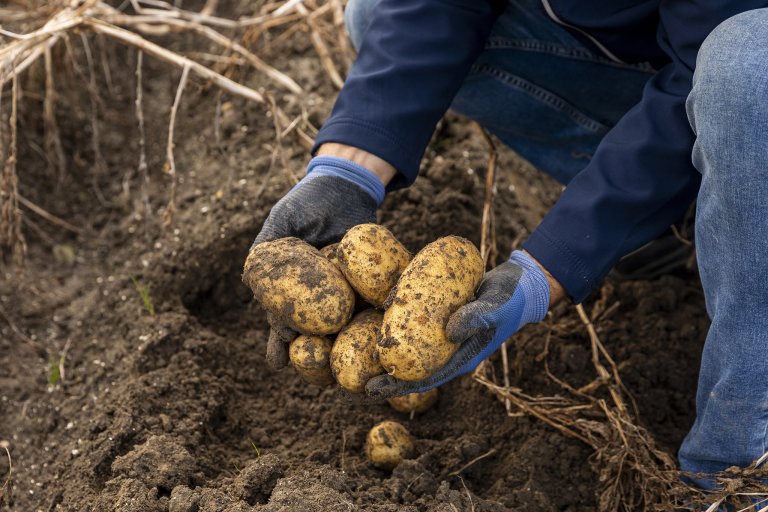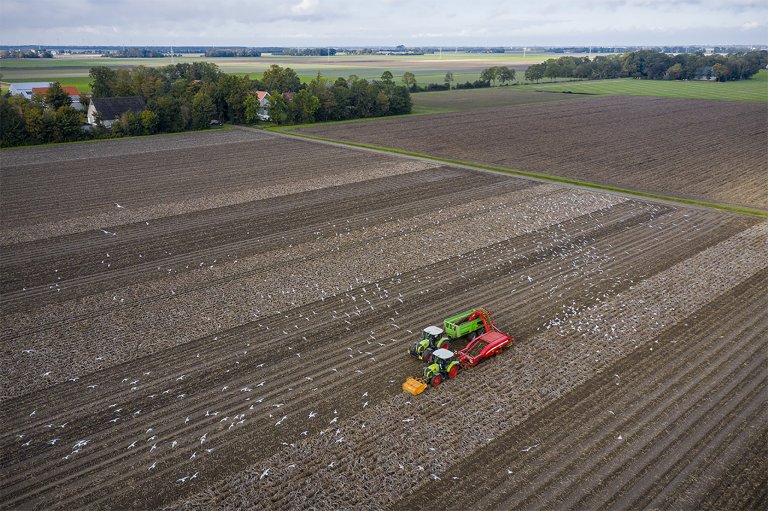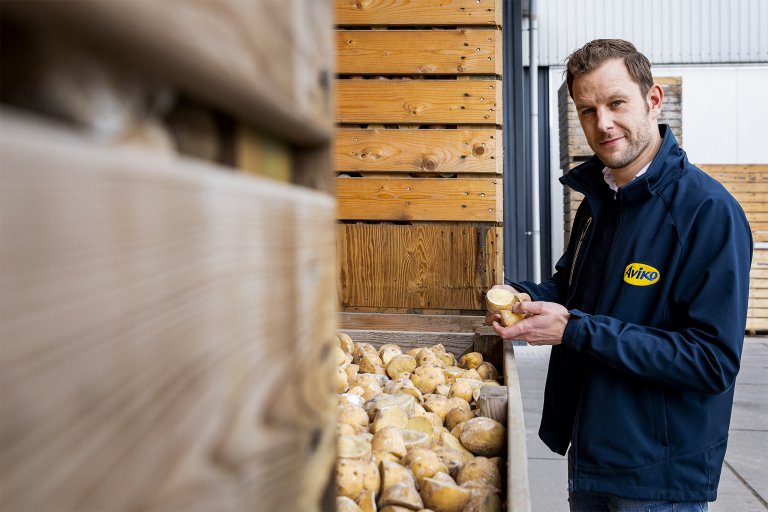17-03-2025 Storage Management of Seed Potatoes
Proper storage of seed potatoes is crucial to maintain their viability until planting. Important factors include temperature, hygiene, airflow, and moisture. The best seed potatoes are ready to sprout or have just begun sprouting at the time of planting. Good seed potatoes are also free from diseases and damage. However, weather conditions can delay planting, causing seed potatoes to start sprouting before planting. This article describes the basic principles of storage management to balance these requirements.
Temperature
Storage temperature is of great importance. Storage areas should generally have a temperature between 7 and 10°C. Higher temperatures can cause the seed potatoes to sprout too quickly, while lower temperatures make the seed potatoes inactive and more susceptible to damage, with risks of infections. If planting is expected to be delayed, store the potatoes around 7 degrees. If planting will take place soon or if it concerns late-maturing varieties, store them around 10 degrees. Ensure that the temperature does not vary when moving the seed potatoes to prevent condensation and rot.
Hygiene
Seed potatoes are often stored in cubic crates in the same shed as the consumption harvest. It is important that the storage area is clean of potato residues from the previous harvest year and disinfected to prevent the spread of bacteria, fungi, and other diseases. Inspect the seed potatoes upon receipt for signs of rot or disease and immediately remove affected tubers to prevent contamination.
Airflow and Moisture
Seed potatoes breathe more than consumption potatoes in storage, especially after the dormancy period or transport movements. Good airflow is crucial to remove excess moisture and maintain the ideal temperature. This prevents free water formation and keeps the potatoes stable. Increased respiration of the seed potatoes produces heat that must be dissipated.
Seed potatoes delivered in big bags should preferably be removed from the big bag as soon as possible (leave them in big bags for a maximum of 3 days). Use cubic crates, for example, to allow moisture, heat, and CO2 to escape. Although moisture on the potatoes is undesirable, internal moisture is important for early sprouting. Maintain a relative humidity of 85-95% to prevent dehydration.
Management of Cut Seed Potatoes
Both whole and cut seed potatoes can be used for planting, depending on specific conditions and needs. It is essential to handle and store cut seed potatoes differently to ensure their viability.
Aviko growers usually receive pre-cut seed potatoes in the case of cut seed potatoes. Damaged parts can allow spoilage organisms to infect the seed potatoes, leading to poor emergence and reduced plant vitality. Therefore, handle cut seed potatoes more carefully to avoid bruising; their newly formed skin on the cut surfaces is sensitive to damage. It is important to know how much time has passed between cutting and arrival at your farm. Allowing time for the formation of a protective layer is important for many varieties. When seed potatoes are planted with unhealed surfaces or damage, this increases the risk of infection and spoilage of the seed potatoes.
After cutting, heal the seed potatoes at 10-12°C with 120-140 m³ of air per hour per ton, as with a freshly harvested crop (wound healing). Maintain this high air circulation and keep the relative humidity at 85-95% for 3-4 days to promote healing without drying out the seed potatoes too much. This process helps form a protective, waxy layer over the cut surfaces, reducing the risk of infection. Once a leathery surface has formed, the temperature can be lowered to 8-10°C and airflow managed as with standard, whole seed potatoes. Full skin formation takes more than 2 weeks for potatoes stored at 10°C. Lower temperatures slow down the wound healing process.
Conclusion
Proper selection, cutting, and storage techniques are crucial to maintaining the health and vitality of seed potatoes. Observation is the first step of management; consistently check temperature and humidity levels to keep them within the optimal range. There is only one chance to plant correctly.
Questions? Contact your Aviko Field Service representative.



